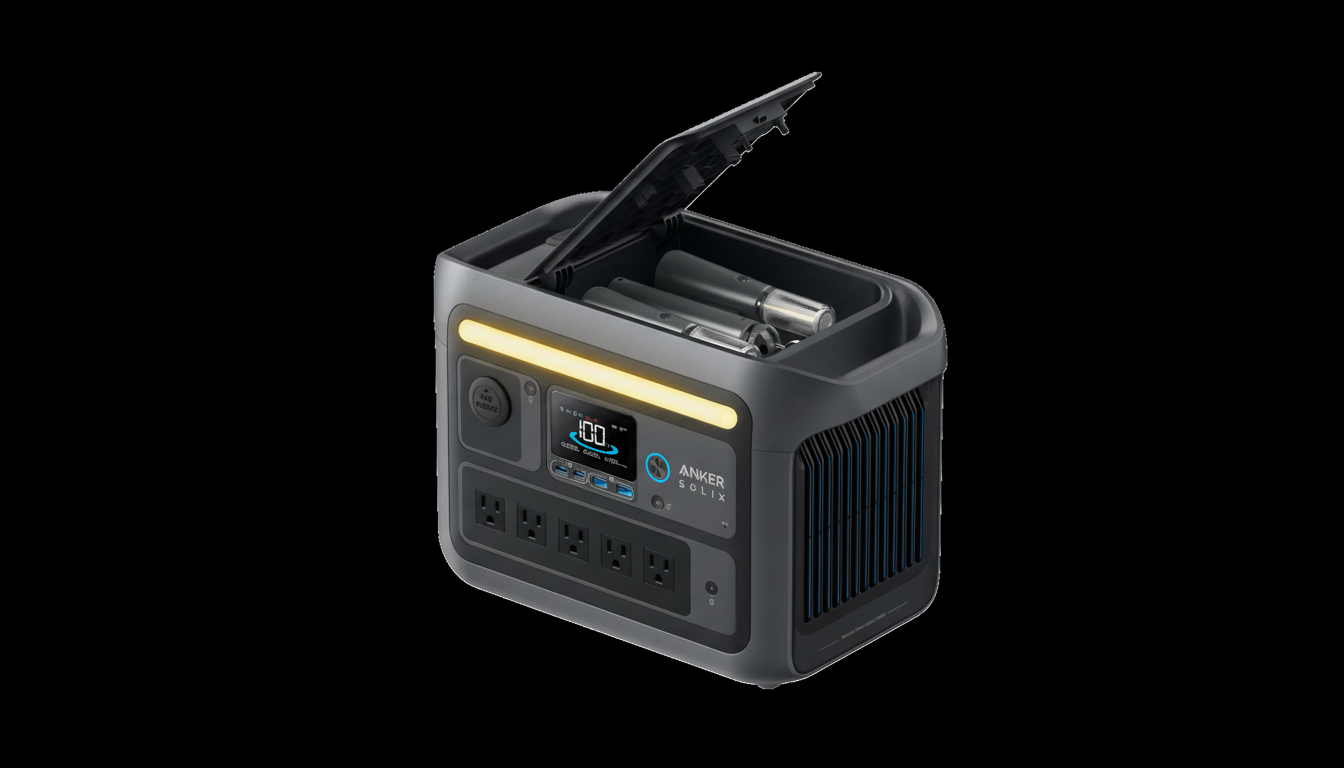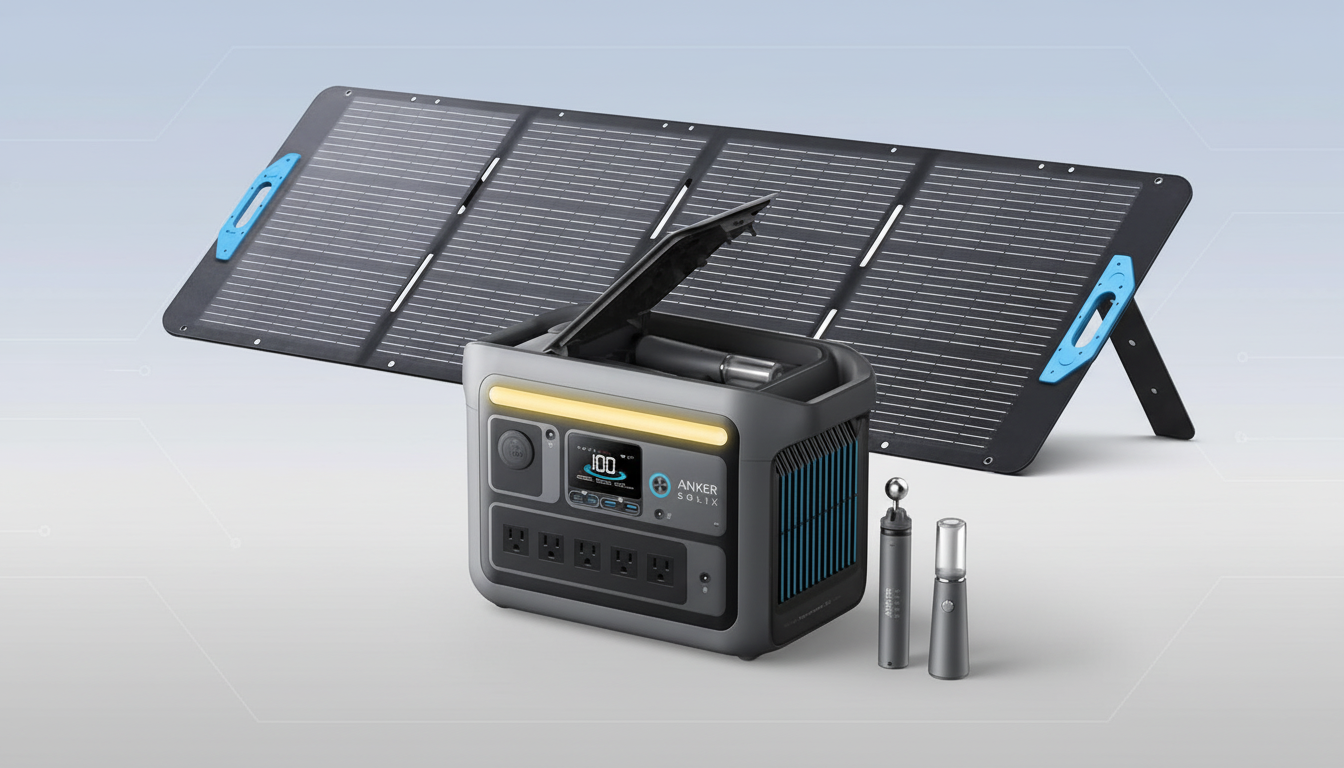The Anker Solix C800 Plus is brand-new to the market, and it has just landed at $349 after a hefty $300 price cut from its $649 list price, a big 46% off. It’s the best price we’ve seen from the retailer and instantly makes this 768Wh portable power station one of the best values for campers, tailgaters, and outage prep.
Why This Anker Solix C800 Plus Deal Stands Out Now
At $349, the Solix C800 Plus is about $0.45 per watt-hour, far lower than the typical $0.60 to $1.00 range for this class.
- Why This Anker Solix C800 Plus Deal Stands Out Now
- Key Outdoor Features And Ports That Matter For Campers
- Real-World Runtime Examples For Common Devices And Uses
- How It Compares To Rival Power Stations Of Similar Size
- Who The Anker Solix C800 Plus Is Best Suited For Today
- Key Considerations Before You Buy The Anker Solix C800 Plus

You also have long-life LiFePO4 battery chemistry, which most manufacturers (including Anker) rate to last for thousands of charge cycles before significant capacity loss. That kind of longevity is important as extreme weather and grid failures become increasingly common, with the most recent reliability data cited by the U.S. Energy Information Administration indicating that the average U.S. utility customer still experiences several hours of outages each year.
Key Outdoor Features And Ports That Matter For Campers
The Solix C800 Plus offers 768Wh of LiFePO4 capacity and supplies mixed interfaces such as multiple AC outlets for small household appliances, USB-A, and dual USB-C ports that will speed up charging for laptops, drones, and cameras.
One of its USB-C ports delivers up to 100W, which is plenty to charge power-hungry devices like most recent notebooks without needing an adapter.
The “Plus” model is distinguished by its camping-specific lighting kit. Up top, a removable lamp lets you choose flashlight, floodlight, or even candle-style ambience lighting, while the base of the unit features its own light bar for when you’re fumbling around in the dark. It’s a nice touch that eliminates the need for a separate lantern and makes packing simpler.
Recharging can be done with typical wall power, 12V car input, and solar using an MPPT controller. Combine it with a suitably sized portable panel and you can recharge a significant portion of the battery over a sunny afternoon — great for extended off-grid stays.
Real-World Runtime Examples For Common Devices And Uses
Runtime depends on load and conversion losses, though the numbers are promising. Approximate the following (85% usable capacity):

- CPAP machine at 40W: about 16 hours, which will last a whole night with spare.
- Portable fridge at 60–70W average: about 9–10 hours, more if the compressor cycles on and off.
- Laptop at 60Wh per charge: about 10 recharges via USB-C PD.
- Smartphone at 12Wh per charge: approximately 50 or more charges, good for multi-day trips and groups.
Because it’s battery-powered, operation is near-silent beyond cooling fans, and there are no fumes (a significant safety advantage over gas generators, given guidance from the Centers for Disease Control and Prevention on the risks of carbon monoxide indoors).
How It Compares To Rival Power Stations Of Similar Size
EcoFlow’s River 2 Pro also uses LiFePO4 cells and comes with a 768Wh capacity, but this sale price is also something of a low point for it: out there it can often be $449–$599 depending on promotions. With more AC outlets and an integrated lighting kit, the Solix C800 Plus one-ups it for overall campsite convenience while coming in lower on price.
Jackery’s Explorer line earns its reputation for build quality and warranty service; similar capacity on other models is more expensive per watt-hour. For comparison, a 1kWh unit will often land at $699–$999 if not discounted. At $349, the C800 Plus offers a significant leap in capacity for the price, assuming you don’t have loads in excess of what a 700–1,000W inverter class can handle.
Who The Anker Solix C800 Plus Is Best Suited For Today
- Campers and overlanders seeking a tidy power and lighting center that serves as an all-in-one setup.
- Households in need of quiet backup power for routers, phones, medical devices such as CPAP, and a small refrigerator during a power outage.
- Creators who want consistent field power for cameras, gimbals, drones, and laptops without carrying an inverter generator.
If you frequently use high-draw items such as power tools, full-size refrigerators, or space heaters, then you’ll want a big 1–2kWh system with a substantial inverter. For heavier loads or more extended blackout support, options such as the Anker Solix C1000 or EcoFlow Delta 2 are better choices.
Key Considerations Before You Buy The Anker Solix C800 Plus
Anker’s Solix line highlights its long-cycle LFP chemistry as well as rugged-style build; Consumer Reports and other testing publications frequently note the durability advantages of LFP compared to older NMC chemistries. Anticipate several years of regular usage, provided you do not frequently deep-discharge it when not required and you properly store your battery.
Check the bundle contents — some listings also throw in charging cables and the modular lamp, though these may vary. If you intend to remain off-grid, also contemplate a folding solar panel; a 100–200W panel is a sensible size for day-to-day top-ups.
Bottom line: Priced at just around $349, the Anker Solix C800 Plus nails a rare sweet spot of capacity, ports, and camp-ready lighting on its way to an all-time low. If you’ve been thinking about targeting a mid-size power station, do it now.

